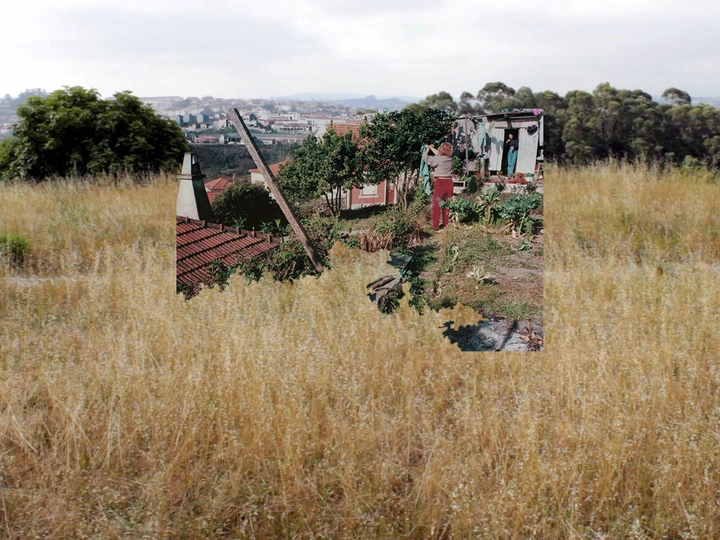Ruderal Stories

I’m a Brazilian artist and researcher based in Portugal, completing a PhD in Artistic Studies at NOVA University of Lisbon, supported by the Portuguese Foundation for Science and Technology. I hold a degree in Architecture and Urbanism and a Master’s in Art and Design for Public Spaces.
My interdisciplinary practice connects the arts, spatial practices, and urban studies, focusing on the physical, affective, mnemonic, and political dimensions of places. Grounded in situated knowledge, my work unfolds in varied formats depending on the territories I engage with — including collective and audio walks, on-site interventions, publications, objects, textile pieces, visual essays, and audiovisual installations. I also occasionally work in scenography and film production design.
Since 2017, I have been investigating urban wastelands in Portugal — working with ruined or emptied sites that appear ‘abandoned’ due to deindustrialization or urban transformation, yet still retain signs of informal human and more-than-human activity. My long-term research has taken shape through academic publications and artistic projects such as the exhibition "BALDIO – The Wasteland Archive" (ZK/U Berlin, 2024), developed during my fellowship at ZK/U; the audiowalk "Marginalia Vegetal" (Lisbon, 2024); the installations "No Place Ever Vanishes" (Porto, 2021) and "Archeology of the Void" (Porto Design Biennale, 2019); and the co-curation of the speculative walk series "Journeys to the In-Between” (MAAT Lisbon, 2020), with the architecture collective Artéria.
My currently work approaches residual or vacant urban terrains not as voids, but as living and layered spaces — entangled with ruderal ecologies, urban memory and imagination, and potential collective futures. I’m particularly interested in practices that traverse disciplinary and territorial boundaries, opening space for situated, experimental, and ethical forms of knowledge, as well as for critical spatial thinking and practice.
Ruderal Stories is an ongoing artistic research project that engages with urban wastelands — seemingly empty and disturbed terrains resulting from disinvestment or urban transformation. Rather than seeing these places as vacant, I approach them as unruly spatial archives holding traces of erased ways of living, more-than-human dynamics, land-related tensions and imagined futures. To uncover these fragments, I developed a working method grounded in the embodied experience of space (through walking and lingering), field research (based on oral testimonies, sound, visual and text documentation) and the collection of archival material (objects, documents and narratives). These materials inform artistic works across various media, including ephemeral territorial activations, interventions, audiowalks, objects, publications, and audiovisual installations. Ruderal Stories provides a conceptual and methodological framework for my long-term research-based practice and its future developments. It is guided by the notion of the ruderal — from the Latin for “rubble” — referring to plants that thrive in disturbed soils. A ruderal attitude is invoked as a form of repair amid ruination and planetary crisis. Taking this image as a guide, I aim to further develop artistic methods inspired by these terrains — creating tools to engage with and question their presence in the city. I am particularly interested in approaching ruderality as a practice of resistance, by investigating informal cultivation activities in post-demolition sites as acts of territorial care and restoration. Having already worked with sound and image to present the archival materials in these terrains, I now seek to experiment new ways of presenting multimedia content, potentially incorporating technological tools for in situ spatialization. By embodying ruderal resilience, wastelands unsettle dominant notions of ‘nature’ and urbanity, opening alternative ways of experiencing time and space within the city.